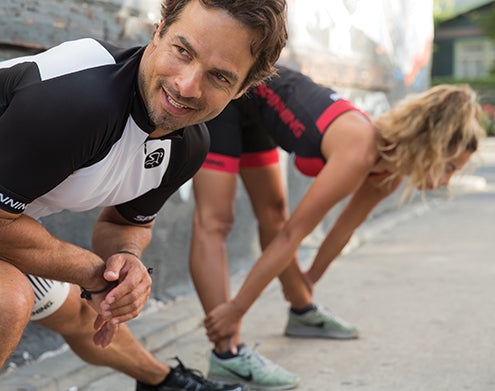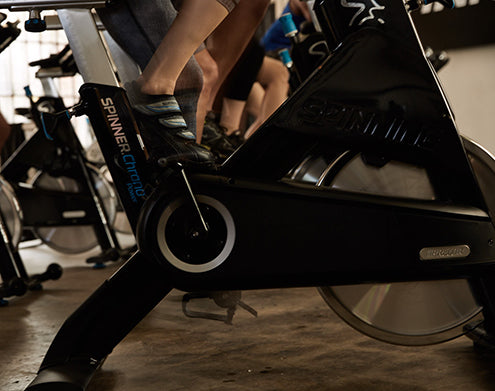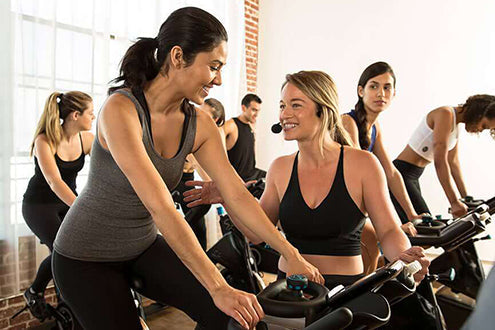What is Flexibility?
Flexibility is defined as the normal extensibility of all soft tissue that allows for optimal range of motion of a joint 5. Simply stated, if a person is flexible, their tissues are extensible enough to allow for each joint to move as it is intended to move without limitation, compensation, or impediments. With that said, extensibility alone does not make a person flexible. The ability to control motion—termed motor control—is just as important. Optimal range of motion coupled with the nervous system’s ability to control that range of motion makes up proper movement.
The Science Behind Flexibility
In order to achieve optimal extensibility, it’s important to understand how basic muscle physiology plays a role in stretching techniques. Muscles, tendons, ligaments, and joint capsules contain small sensory receptors called mechanoreceptors that send messages from the source to the nervous system to detect any distortion in soft tissues, such as stretch, touch, and pressure 6. Two important mechanoreceptors to understand when it comes to flexibility are muscle spindles and the Golgi tendon organs.
Muscle spindles are major sensory organs of the muscles and are sensitive to changes in length and the rate of length change (Figure 1). If a muscle is stretched too fast and/or too far, these sensory organs are also stretched and stimulated. When stimulated, a signal is sent to the brain telling the brain to contract the muscle, helping to protect the muscle from injury 7.
The Golgi tendon organs (GTO) are mechanoreceptors that reside in the musculotendinous junction (where the muscle and tendon come together). These mechanoreceptors are sensitive to changes in muscular tension and the rate of tension change. Unlike the muscle spindles, when the GTOs are stimulated, they cause the muscle to relax, decreasing tension in the muscle in order to protect the muscle from injury7.
When stretching a muscle, the muscle spindles are initially stimulated to help protect the muscle from stretching too far, causing the muscle to contract. This can be experienced when feeling an initial “tightness” when initiating the stretch. As the stretch is held, more tension is created, stimulating the GTO, which then overrides the muscle spindles, causing the muscle to relax (termed the autogenic inhibition reflex) 8. At this point, the “tightness” first experienced when engaging in the stretch becomes less, allowing the joint to be placed in a new position to further stretch the muscle. Over time, this can lead to permanent changes to the muscle and the associated tissues, resulting in tissues that are more extensible. Because the autogenic inhibition reflex is activated through the development tension, it becomes important that stretches are held for a specific period of time (20-60 seconds)6 so enough tension is created to stimulate the reflex. This important for Spinning® instructors to consider when it comes to applying stretches at the end of class, as many may only hold the stretch for a few seconds before going to the next stretch. This results in individuals not getting the most out of the stretch.
Practical Application
If time is short, but you want to apply a full 20-60 seconds for each stretch at the end of your Spinning class, there are three key muscles to focus on. These groups include the calves (gastrocnemius/soleus), hip flexors (specifically the rectus femoris), and pectoral (chest) muscles. These muscles are key areas to address because of the body’s posture on the bike and their usage during a Spinning® class. They are also important because tightness in these muscle groups can affect the range of motion of multiple joints. The calf musculature (specifically the gastrocnemius) crosses both the ankle and knee joint. If it is tight, it can not only reduce the range of motion of the ankle, but the knee as well. The rectus femoris (a hip flexor that is also considered part of the quadriceps group) crosses both the knee and hip joint. If it is tight, it can negatively affect the range of motion of both the hip and knee. Due to the rider's body positioning while on the bike (forward flexed position), the pectoral muscles can also become tight, resulting in a limited range of motion in the shoulder complex. Stretching these three regions will help to address the main joints of the body that can lead to pain and injury if range of motion is limited.
Stretching can be as important as the ride itself and should not be neglected in a Spinning® class. However, proper application of these stretches must be applied to ensure riders get the most out of there stretches. Make sure to hold stretches between 20-60 seconds to allow for optimal relaxation of the muscle. If time is an issue, key muscles to stretch would include the calves, hip flexors and pectorals. The pectoral stretch can be performed on the bike, while the lower body stretches being performed off the bike.
This article was contributed by Scott Lucett, MS, Education
References
- Witvrouw, E., Bellemans, J., Lysens, R., et al. (2001). Intrinsic risk factors for the development of patellar tendonitis in an athletic population. A two-year prospective study. American Journal of Sports Medicine, 29(2), 190-195.
- Cibulka, M.T, Sinacore, D.R, Cromer, G.S & Delitto, A. (1998). Unilateral hip rotation range of motion assymetry in patients with sacroiliac joint regional pain. Spine,23(9), 1009-1015.
- Witvrouw, E., Danneels, L., Asselman, P., D’Have, T., & Cambier, D. (2003). Muscle flexibility as a risk factor for developing muscle injuries in male professional soccer players. A prospective study. American Journal of Sports Medicine,31(1), 41-46.
- Knapik, J.J., Bauman, C.L., Jones, B.H., et al. (1991). Preseason strength and flexibility imbalances associated with athletic injuries in female collegiate athletes. American Journal of Sports Medicine,19(1), 76-81.
- Alter, M.J. (1996). Scienc of flexibility (2nd ed.). Champaign, IL: Human Kinetics.
- Enoka, R.M. (1994). Neuromuscular basis of kinesiology (2nd ed.). Champaign, IL: Human Kinetics.
- Cohen H. (1999) Neuroscience for rehabilitation (2nd ed.). Philadelphia, PA: Lippincott Williams & Wilkins.





Leave a comment
This site is protected by hCaptcha and the hCaptcha Privacy Policy and Terms of Service apply.